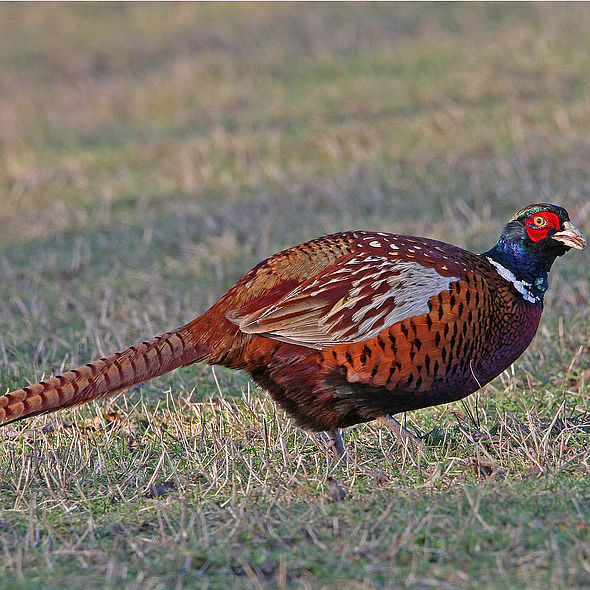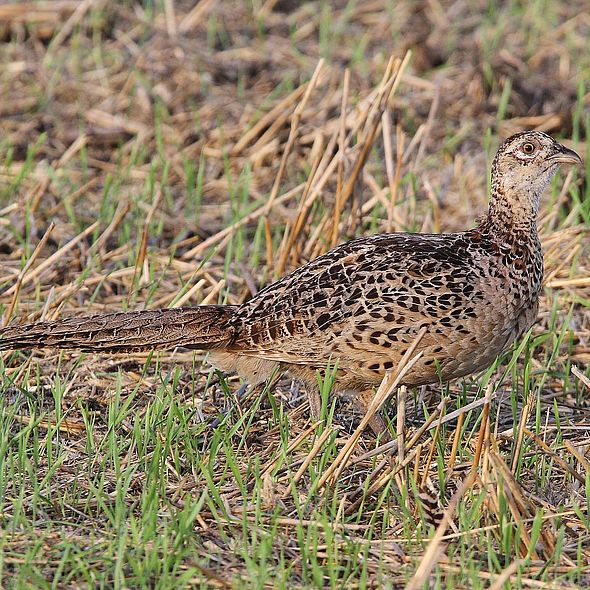Phasianus colchicus
Interesting facts: The pheasant was introduced predominantly for hunting. It is thought that the Romans were responsible for its spread throughout Central and Western Europe. The species needs varied landscapes with copses, hedges, fields and water-bodies with reed beds. Pheasants dig in sandy soils for stomach stones. These help the birds to digest their food.
Characteristics: Males and females with distinctive long, drawn-out, pointed tail; plumage of the males is colourful with black-green and purple shining head and red cheeks, sometimes with, sometimes without a white neck ring (Image 1), females unremarkable coloured camouflage beige-brown (Image 2)
Body length: Longer than 30 cm (longer than a blackbird)
Distribution: Richly structured landscapes with fields, copses and hedges, edges of forests

